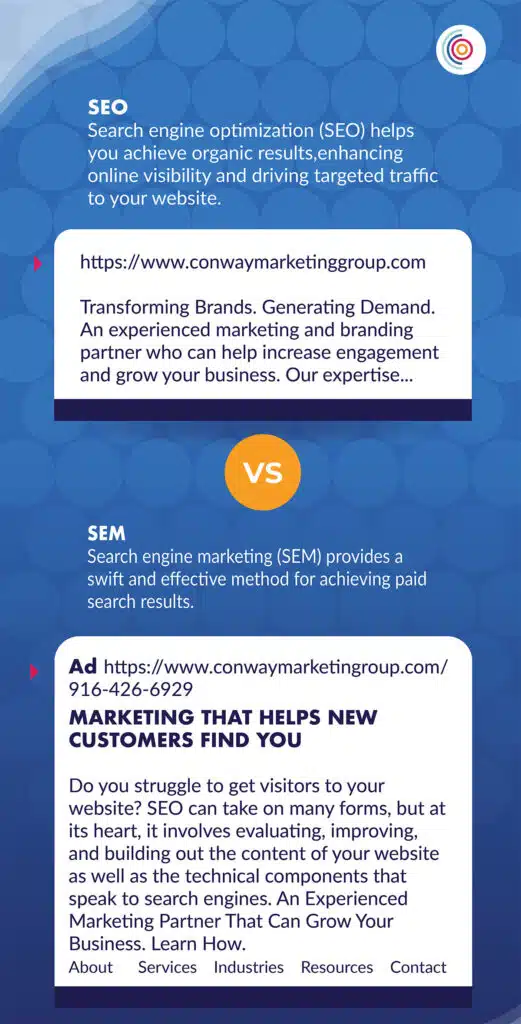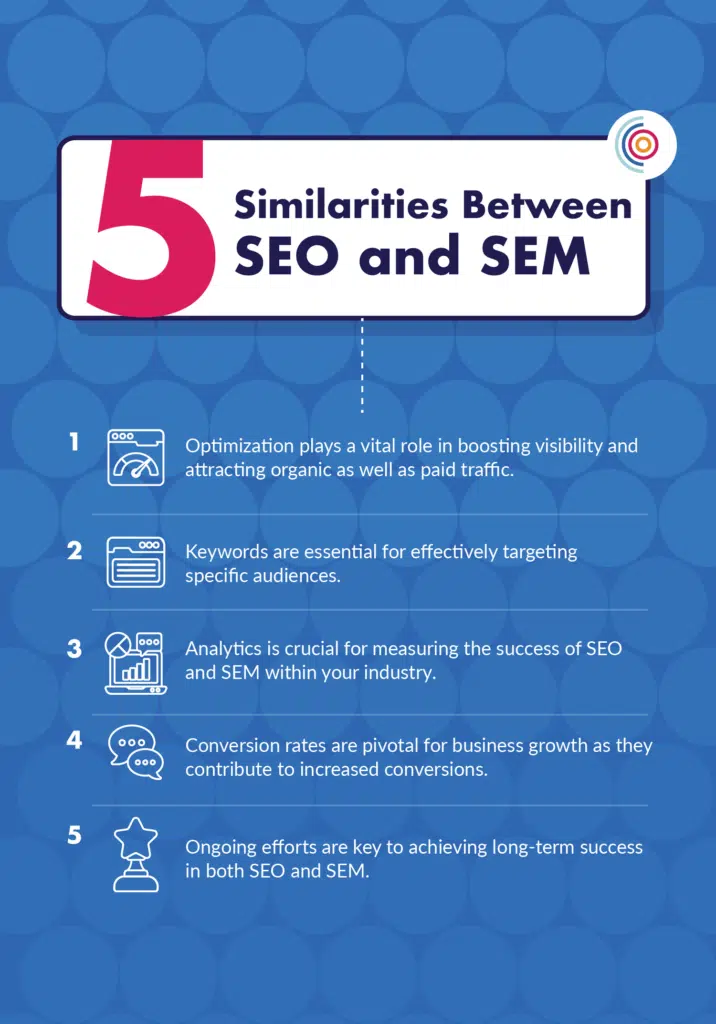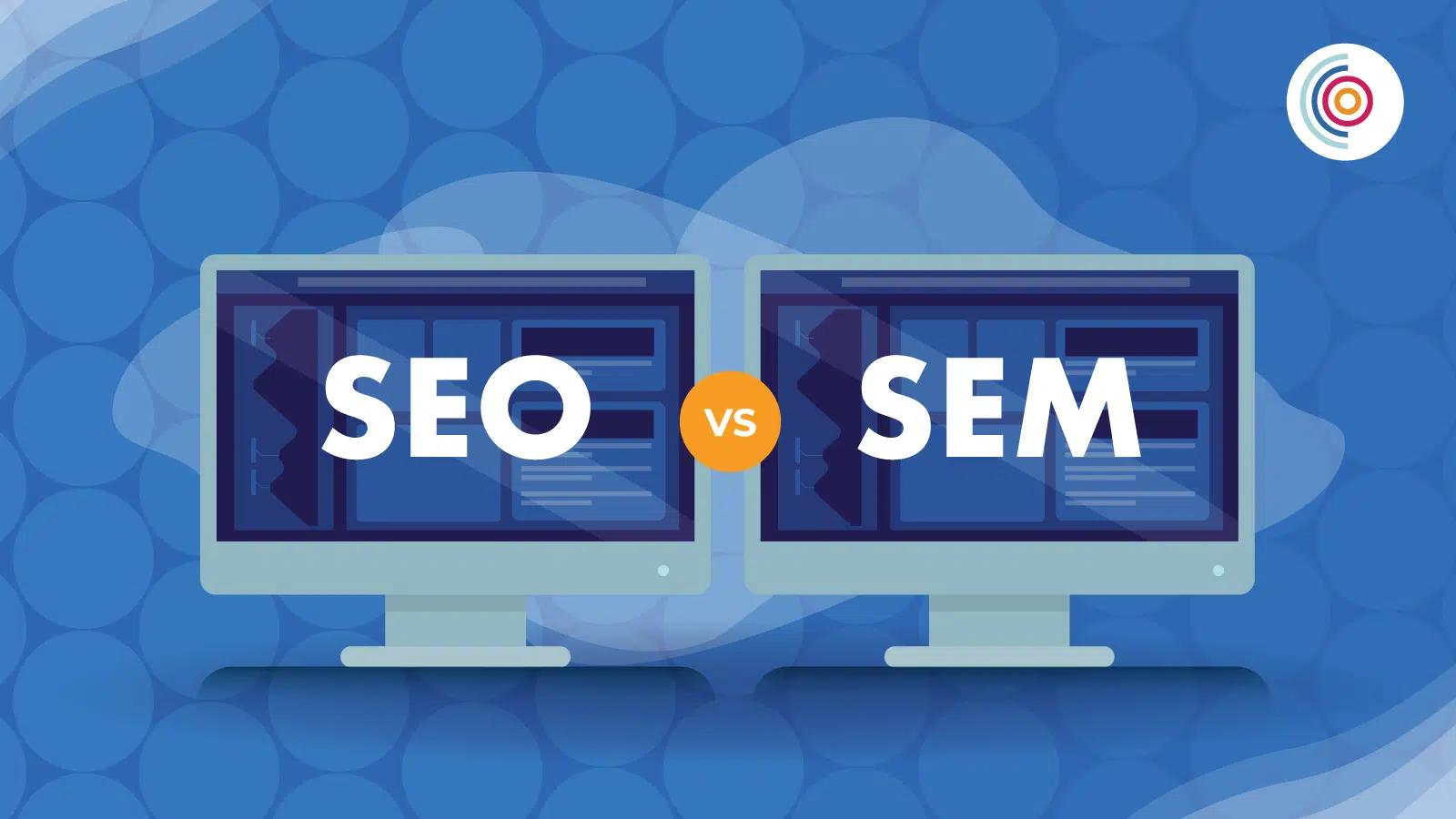Welcome to this introductory guide on SEO and SEM in the healthcare industry. We often hear these terms thrown around in online marketing strategies, but wait, are they actually the same thing? Well, not quite! Let’s break it down for you.
Let’s start with SEO, which stands for Search Engine Optimization. SEO is all about making your healthcare website more search engine friendly so that it has a higher likelihood of showing up in search engine queries. It involves evaluating and scrutinizing your website to improve its content, structure, and user experience. Picture it as a long-term strategy that requires time and effort, but trust me, it’s totally worth it because it helps your website rank higher on search engines like Google and Bing. And who wouldn’t want more organic (unpaid) traffic to their healthcare website?
Now, let’s dive into SEM or Search Engine Marketing. This one’s a bit different. SEM is paid advertising to boost your website traffic in search engine results. Essentially, search engine marketing allows you to buy your way higher up in search engine results through advertising. With SEM, you can target specific keywords and demographics to make your healthcare website more visible on search engine results pages. And while the result is delineated as an ad, here’s the exciting part: unlike SEO, SEM gives you immediate results and allows for more precise targeting.
So, both SEO and SEM have their place in healthcare marketing strategies. By incorporating these techniques, healthcare providers can improve their online presence, attract more patients, and effectively reach their target audience in this digital healthcare landscape. It’s all about finding the right balance and making the most of both worlds.
Unlock the Secrets to SEO Success: Dominate On-Page, Off-Page, Technical, and Local SEO
In the realm of healthcare, search engine optimization (SEO) covers four key areas: On-Page SEO, Off-Page SEO, Technical SEO, and Local SEO. Each area plays a vital role in boosting the visibility and search engine rankings of healthcare websites.
On-Page SEO focuses on optimizing individual web pages to make them more relevant and valuable in the eyes of search engines. At its core, on-page SEO is about content. You should be providing valuable content that the reader is looking for and finds relevant. Identifying and researching compelling and sought-out subject matter is paramount. You should write content people need and helps answer their questions This also means inserting target keywords in the content, using appropriate headings, and establishing a well-structured internal linking system.
Off-Page SEO in healthcare refers to activities done outside of your website to strengthen its authority and online presence. Building high-quality backlinks, engaging with the healthcare community on social media, and managing your online reputation are key strategies in Off-Page SEO. Backlinks refer to how many other websites link back to yours. Google considers this an important factor in determining which pages are important. But just go after spam. There are thousands of company willing to secure backlinks for you, but if these are not important websites it simply will not help. The best backlink strategy is similar to a public or media relations strategy that requires times and skilled outreach. A link on the Wall Street Journal for example back to your website in extremely valuable, although difficult to secure.

Technical SEO in healthcare involves optimizing the technical aspects of your website to ensure search engines can easily crawl and index it. This includes factors like improving website speed, ensuring mobile-friendliness, implementing structured data specific to healthcare, and enhancing website security.
Local SEO is particularly important for healthcare businesses targeting specific geographic areas. By optimizing your website for local search, creating a Google My Business listing, and gathering positive patient reviews, you can attract local patients seeking healthcare services in your area.
By mastering these four pillars of SEO in healthcare, you can enhance your website’s visibility, attract more organic traffic, and ultimately drive the growth of your healthcare practice or organization.
5 Essential Differences: SEO vs. SEM: Unraveling the Mystery
- Cost: SEO is a long-term effort that requires consistent time and effort. The key cost here is time, whether you choose to pay employees or an agency. On the other hand, SEM involves paid advertising, where you bid on healthcare-related keywords to display your ads on search engine results pages (SERPs). While SEO needs your time and effort, SEM requires an immediate financial investment.
- Results: SEO is a gradual process that takes time to show results in the healthcare industry. It involves optimizing your website’s content, structure, and technical aspects to improve visibility on search engines. This requires ongoing maintenance and monitoring for sustainable results. In contrast, SEM produces immediate results as your ads are displayed on SERPs as soon as you start your paid advertising campaign. The difference however is that many people respect organic search results. We’re all used to seeing ads at the top of our searches and while effective, nothing can compare to the top organic spot.
- Targeting: SEO aims to attract organic traffic from search engine users by optimizing your website for relevant keywords. On the other hand, SEM allows precise targeting of specific healthcare keywords and demographics. You can choose the keywords you want your ads to appear for and define your target audience based on factors like location, age, gender, and interests.
- Visibility: SEO efforts can lead to increased organic visibility on search engine results pages in the healthcare industry. By optimizing your website’s content and structure, you can improve rankings for relevant keywords and attract potential visitors. SEM, in addition to improving organic visibility, offers the opportunity to increase visibility through paid ads. Your ads can be displayed prominently on SERPs, increasing your chances of attracting clicks and driving traffic.
- Strategy: SEO is a holistic approach that involves optimizing various elements of your website, including content, meta tags, URLs, and site architecture. It requires a comprehensive approach and ongoing optimization to stay competitive. On the other hand, SEM revolves around paid advertising campaigns. It involves creating compelling ad copies, selecting the right keywords, and managing bids to maximize the effectiveness of your ads.
Both SEO and SEM have their own benefits in the healthcare industry. It’s important to understand the differences between the two to determine which approach is best for your healthcare business goals and budget. You can also combine both strategies to maximize results and reach a wider audience, as they complement each other in driving traffic and improving online visibility.

Important Similarities: SEO vs SEM: Understanding the Connection
- Optimization: Both SEO (Search Engine Optimization) and SEM (Search Engine Marketing) are crucial for improving the visibility of healthcare websites and attracting organic and paid traffic. By implementing techniques like on-page optimization, link building, and content creation, both strategies aim to enhance the online presence of healthcare businesses.
- Keywords: In the healthcare industry, effective keyword research and implementation are vital for targeting specific audiences and improving search engine rankings. Aligning content with user search queries through strategic keyword usage helps healthcare businesses increase their chances of appearing in relevant search results.
- Analytics: Tracking and analyzing data is essential for measuring the success of SEO and SEM efforts in the healthcare industry. By utilizing tools like Google Analytics and Google Ads, healthcare businesses can monitor website traffic, user behavior, conversions, and other key metrics. This data-driven approach helps evaluate the effectiveness of SEO and SEM strategies and make necessary adjustments for improved results.
- Conversion rates: Both SEO and SEM play a crucial role in increasing conversion rates and driving business growth in the healthcare industry. While SEO focuses on optimizing the user experience and organic traffic to encourage conversions, SEM leverages paid advertising to attract potential patients and drive immediate conversions. By targeting relevant keywords, optimizing landing pages, and creating compelling ad copies, healthcare businesses can maximize their conversion rates through both strategies.
- Ongoing efforts: The healthcare industry requires consistent effort and maintenance in SEO and SEM to ensure long-term success. As search engine algorithms and patient behavior evolve, healthcare businesses need to adapt their strategies accordingly. Regularly updating website content, monitoring keyword performance, refining ad campaigns, and staying updated with industry trends are crucial aspects of both SEO and SEM in the healthcare industry to stay ahead of the competition and continue driving results.
By understanding and leveraging these key similarities, healthcare businesses can develop a comprehensive search marketing strategy that combines the strengths of both SEO and SEM for maximum online visibility, traffic, and conversions.
The Importance of Content Marketing in SEO
Content marketing plays a crucial role in healthcare SEO. By addressing all three areas of healthcare SEO, you can improve your website’s visibility, drive organic traffic, and boost search engine rankings. Despite implementing these strategies, many healthcare website owners still struggle to achieve high rankings.
One aspect that should not be overlooked in healthcare content marketing. It involves creating and sharing valuable, relevant, and consistent healthcare-related content to attract and engage a specific audience. This content can take various forms, such as informative blog posts, educational videos, healthcare infographics, and updates on social media platforms.
Why is content marketing important for healthcare SEO? Firstly, search engines like Google prioritize high-quality healthcare content in their algorithms. This means that the better your healthcare content, the higher your chances of ranking well on search engine results pages (SERPs). Additionally, regularly producing valuable healthcare content can help generate backlinks from other healthcare websites, which is a crucial factor in off-page healthcare SEO.
Content marketing in healthcare also allows you to target specific healthcare keywords and topics that interest your audience, making it easier for search engines to understand the purpose of your healthcare website. By consistently publishing relevant healthcare content, you can establish yourself as a trusted authority in the healthcare industry, further enhancing your overall healthcare SEO efforts.
Successful Content Marketing Tips: Boost Your Strategy for Better Results
To maximize the effectiveness of your healthcare content marketing strategy, here are some tailored tips to keep in mind:
- Know your healthcare audience: Before creating any content, it’s crucial to understand the specific healthcare audience you’re targeting. This will ensure that your content is relevant and valuable to them.
- Research healthcare keywords: Incorporate targeted healthcare keywords into your content to improve its visibility on search engines. Use tools like Google Keyword Planner or SEMrush to identify popular and relevant healthcare keywords.
- Create high-quality healthcare content: As mentioned earlier, search engines prioritize quality content. Ensure your healthcare content is well-written, informative, and engaging for readers.
- Be consistent in healthcare content marketing: Consistency is key when it comes to healthcare content marketing. Establish a schedule for releasing new healthcare content and stick to it. This will help keep your healthcare audience engaged and demonstrate to search engines that your website is active.
- Utilize different healthcare content formats: Don’t limit yourself to written healthcare content alone. Experiment with various formats, such as healthcare videos, infographics, or podcasts, to appeal to different types of healthcare audiences.
Master SEO and SEM Strategies with Conway Marketing Group
At Conway Marketing Group, we specialize in crafting SEO and SEM strategies tailored specifically for the healthcare industry. Our team of experts excels in creating comprehensive digital marketing plans that seamlessly integrate the best of both worlds, ensuring optimal visibility and engagement for your healthcare website. We understand the paramount importance of optimizing your online presence to reach and connect with your target audience effectively. Let us guide you on this transformative journey toward resounding success in the ever-evolving digital healthcare landscape. Waste no time – reach out to us now, and let’s elevate your healthcare brand to the top of the search results!



